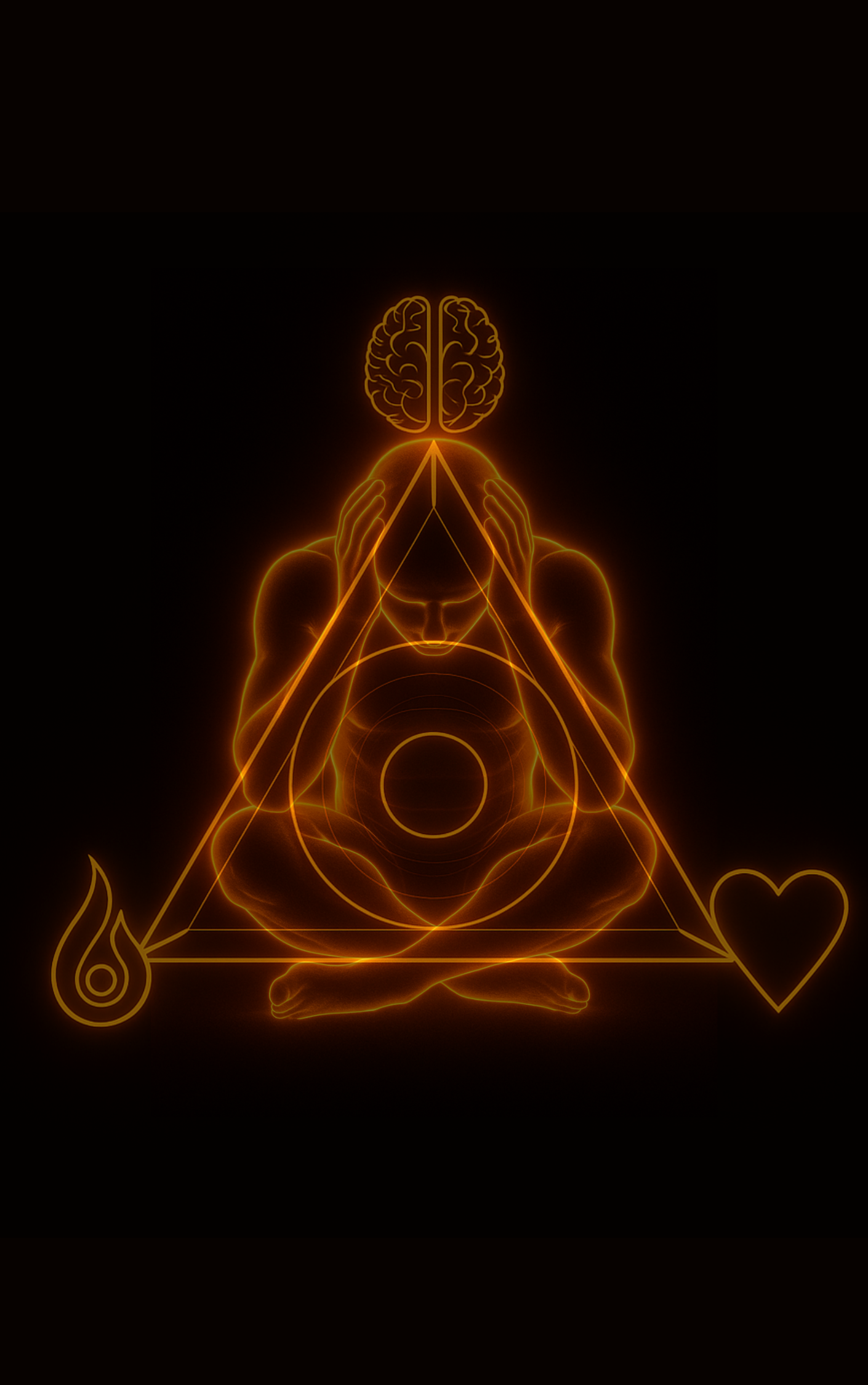At its core, the theory is built upon a set of foundational assumptions
that support its vision of emotion, feeling, and perception:
1. Emotions Are Energetic–Electrical Currents with Binary Structure
Every feeling is an energetic–neural frequency
that travels through the nervous system
in a primitive digital pattern: pulse (1) / absence (0).
This makes emotions not only scientifically accessible—
but energetically manageable,
beyond vague psychological states.
2. Conscious Perception Is the Maestro of Emotion
Perception does not passively reflect reality—
it actively reshapes energetic flows,
capable of amplifying, suppressing, or restructuring them
based on the present moment or the activation of emotional memory.
3. Memory Stores Emotions, Not Just Images
Events are not archived as cold data—
but as colored emotional energies
that can later be recalled as if they were still alive.
These stored pulses can be dismantled or rebuilt
when perception is activated with conscious intent.
4. Emotional Filters Are Programmable
Through conscious imagination,
mental repetition,
and the analysis of emotional responses,
individuals can recalibrate their internal filtering system—
triggering a fundamental shift in how they respond to the world.
5. Perceptual Elevation Is a Gradual Climb Through Frequencies
Higher emotional states are not divine gifts—
they are earned through progressive ascension
via refined energetic frequencies,
where the self is restructured from within,
layer by conscious layer.
6. Energetic Recalibration Leads to a Total Shift in Perception
When one realigns their emotional architecture,
their view of the self, the world, and human connection transforms—
opening vast doors toward psychological freedom
and independent inner growth.
Emotions as Energy Structures: A Transformative Perspective
“Emotions are not just words spoken,
nor merely a racing heartbeat;
they are a silent language of energetic currents,
flowing through our bodies like a hidden river…
awaiting the one who can read its tides.”
From the dawn of human thought,
the question of what emotion truly is has preoccupied philosophers, physicians, and psychologists:
• Philosophers saw emotions as interactions between the soul and the world.
• Biologists linked them to glandular and hormonal secretions.
• Sociologists interpreted them as circumstantial responses to cultural environments.
While these schools have offered valuable insights,
none have truly touched the energetic core of emotion—
nor explained how a feeling can persist without cause,
contradict itself internally,
or arise from nowhere… like sudden love or hidden anxiety.
More Than Just a Reaction…
Defining emotions as mere “automatic responses” is no longer sufficient—
not in a world where we experience seemingly illogical emotional states such as:
• Fear that lingers long after danger has passed.
• Longing for something we cannot name.
• A mixture of joy and sadness in the same moment.
These phenomena suggest that emotion is not just a neurological response,
but a complex structure of energetic–electrical currents
influenced by:
• Stored memory,
• Momentary conscious perception,
• Past emotional experiences,
• And the emotional filters built by the mind over time.
A New Vision of Emotion in Emotional Energy Theory
The theory redefines emotion as:
An energetic–electrical current
moving through the neural network,
following a binary pattern: pulse (1) / absence (0).
Emotions differ from one another based on:
• Frequency of the current
• Intensity of its flow
• Duration of its presence in consciousness
• How perception responds to it: amplification / calming / redirection
Thus, emotion is not an external event—
but an internal interaction that can be reshaped…
once we possess the keys of conscious perception.
The Energetic Model of Emotion: An Inner Symphony
The emotional system can be imagined as an energetic orchestra:
• Each emotion is a note with its own frequency.
• Perception is the conductor,
deciding which note is played, which is muted, and which is transformed.
• Memory and belief are filters—sometimes distorting the sound, other times clarifying it.
Here, emotions are not absolute truths—
but inner music that can be tuned, modified,
and gradually elevated through mental rehearsal and emotional programming.
Conclusion
When you realize that your emotions are not who you are,
but rather flowing energetic currents you can observe, refine, or redirect…
that is when the journey to inner freedom begins.
To “change a feeling” is not a betrayal of the self—
it is the highest expression of self-mastery.
Because you are not what you feel…
you are the one who decides how to dance with it.
